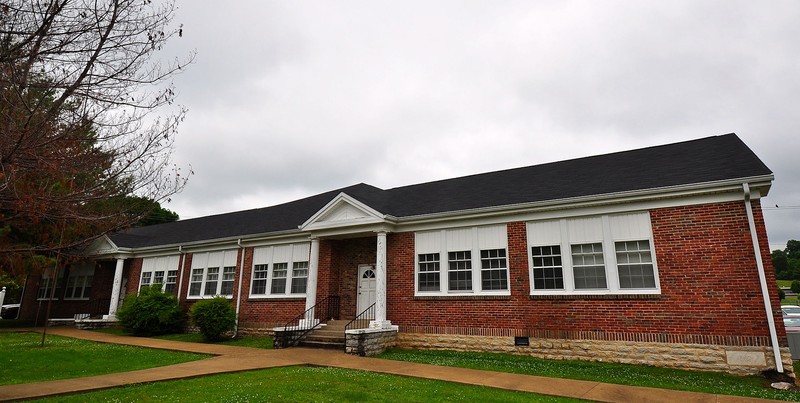Historic Bridgeforth High School
Introduction
Text-to-speech Audio
Named in honor of J.T. Bridgeforth, a prominent Black educator, this building held the first African-American high school in Giles County. The structure was built with funds from the Works Progress Administration and initial construction began in 1936 under the direction of nationally recognized African-American architects Moses and Calvin McKissack, founders of the modern architecture firm Mckissack and Mckissack. The grandfather of the McKissack brothers had been enslaved nearby. Weeks before the school opened, large-scale flooding along the Upper Cumberland River forced citizens to take refuge in the school. In March of 1937, sixty-eight students and three teachers held the first school sessions. In 1950 the school expanded to the school to include grades 1-6. In 1959, school officials decided to build a new high school for African American students next to this building and moved the lower grades into the original Bridgeforth School. In 1965, Giles County became the first county in Tennessee to desegregate schools voluntarily.
Images
This school was built in the Great Depression as a high school in the era of segregation

Backstory and Context
Text-to-speech Audio
The location of the Bridgeforth School has its roots dating back to the Civil War, when Union Soldiers, particularly the 103rd United States Colored Troops, occupied Fort Hill. A contraband camp formed at the base of the hill became the foundation of the early African-American Community. The first city-funded school for African American students was built in 1889. Ten years later, the first county-funded school for Black students was formed in Pulaski in the basement of the Campbell Church and later the Big Harper Church. These schools did not offer a full high school curriculum, stopping at eleventh grade. In 1931-1932, the two schools merged and added a twelfth grade. By 1936, increased student enrollment necessitated the building of a new school.
The school was built by Jackson Taylor and designed by the architectural firm McKissack & McKissack, now one of the architectural and construction firms in the U.S. The pair won numerous contracts during the Great Depression from the Works Progress Administration, and today, a plaque reading “U.S.A 1936-1937 W.P.A” can still be seen on this former school building.
Students living within Pulaski were provided free education while students living outside the city limits were required to pay tuition. When it first opened, the Bridgeforth School offered grades 9-12, by the 1938-1939 school year, grades 7 & 8 were added. A public bussing system was not brought to the school until 1945. In 1950 grades first through six were added when an addition was erected. In 1959, to white school officials hoped to forestall integration by building a new high school for African American students. At that time, this school was converted to hold grades 1-8.
In 1966, the county and city finally integrated the school system in Giles County and consolidated the schools, resulting in the closing of the Bridgeforth Elementary housed in the original building and the conversion of Bridgeforth High into the Pulaski Junior High School.
Sources
National Register for Historic Places: Bridgeforth High Schooll, October 1990
